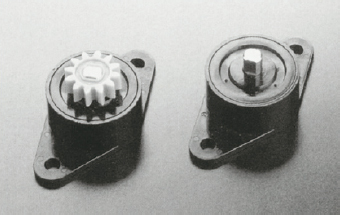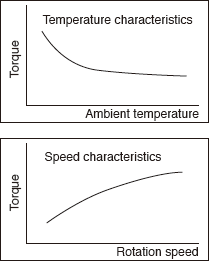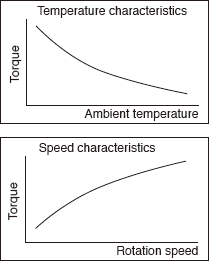

<Basic structure>

This is a rotary damper that utilizes the braking force generated by the oil's viscosity resistence. The braking force generated by oil viscosity, clearance between the rotor and the main body, and the oilʼs contact area varies based on the structure shown above.
1-1) Temperature characteristics
The torque of a rotary damper varies according to the ambient temperature. This is
because the viscosity of the oil inside the damper changes according to the temperature.
1-2) Speed characteristics
The braking torque of a rotary damper varies according to the cycle rate. In general, the
torque increases when the cycle rate increases, and the torque decreases when the cycle
rate decreases. The rated torque listed in the catalogue is the torque generated when the
cycle rate is 20rpm.

<Basic structure>

This is a rotating-type damper that utilizes the oil pressure. The braking force generated by oil viscosity, clearance between the rotor and the main body, and the vaneʼs pressure-receiving area varies based on the structure shown above.
<Basic characteristics>
Similar to the rotary damper, the torque varies according to the ambient temperature. Its basic structure is a dashpot structure
(single orifice). The internal pressure of a damper increases as the ratation speed increases, which consequently increases the
torque.
